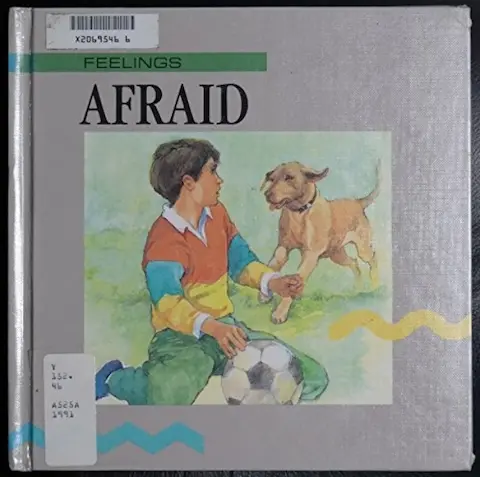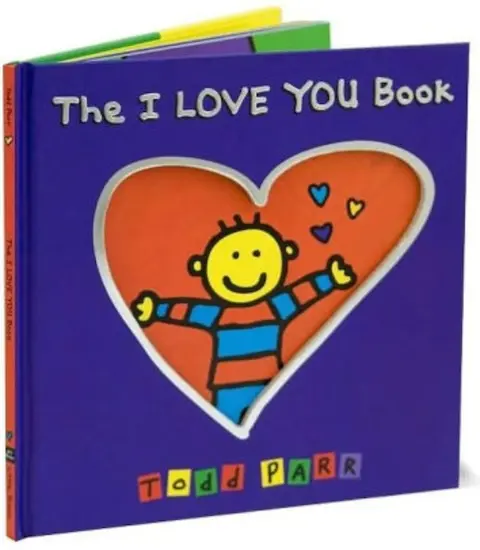settings
children
With Famly since
Large events such as the coronavirus pandemic introduced children to a lot of changes in their daily habits, like constant hand-sanitising and new rules for playing with their friends. For some children, these shifts might have been strange and stressful. But for some families, this time may have been even more difficult, as children confront loss and bereavement for the first time.
It’s a lifelong skill to learn to process tough emotions. In this moment, children need our help in handling their fear and grief, should they feel it, and in finding context for their frustrations.
These books can help introduce children to some of the challenging emotions they might feel now, and give them a way to explore and process those feelings.
1. Dear Grandma Bunny

The children’s story: Dear Grandma Bunny by Dick Bruna, ideal for ages 3-6 years
What it’s about: The Miffy rabbit series was written in 1955, but the central themes are still relevant to experiences children have today. Dear Grandma Bunny explains death in words that young children will find easy to understand. In the story, Grandma Bunny dies and the family thank her for everything she did for them.
The themes it explores: This story introduces the concept of death with sensitivity, exploring the range of emotions that come with losing a loved one. The story also touches on gratitude as they thank Grandma Bunny after she is gone, celebrating her life.
2. Silly Billy

The children’s story: Silly Billy by Anthony Browne, ideal for ages 4-6 years
What it’s about: With so much talk of sickness and social distancing, children who tend to worry will relate to Billy’s problem: He’s a worrier, too. Billy worries so much that it makes it difficult for him to sleep at night. Luckily, Grandma understands Billy and she teaches him how to stop worrying so much.
The themes it explores: Dealing with fear, worry, and anxiety in everyday life is already challenging for sensitive children, and COVID-19 only triggers this further. Billy’s story introduces real strategies that young children can use to help them stop worrying.
3. Dr. Dog Explains COVID-19

The children’s story: Dr. Dog Explains COVID-19 by Lydia Monks, ideal for ages 2-6 years
What it’s about: This story isn’t a book, it’s a PDF guide — but it helps EYFS learners understand the coronavirus better. Dr. Dog is the central character, and due to his cuddly nature and medical license, he’s an authority for children. Dr Dog explains why children might find their world to be different at the moment — why they need to wash their hands, practice social distancing, and why they might have their temperature taken regularly.
The themes it explores: This story answers many of the questions young children might have about how their world has changed because of coronavirus. Dr. Dog helps relieve worry about the unknowns, and gives children simple explanations that help them to understand the new guidelines in place.
4. Time to Come in, Bear

The children’s story: Time to Come in, Bear by Kim St. Lawrence, ideal for ages 2-4 years
What it’s about: This one is all about a loveable bear (and his bunny friend) who have to start practising social distancing. The story reassures the bear that during social distancing, there will still be fun activities to enjoy. It’s got examples of the activities we can’t do right now, and a lot of ideas on fun things to do at home.
The themes it explores: The story presents COVID-19 quite simply, explaining that the “world has a cold” and for now, everyone has to stay in their homes. It only gives the basics of the pandemic, and focuses on the need for distancing and home isolation — it’s a useful way to answer the inevitable “But why?” when you’re keeping the little ones inside.
5. When Sadness Comes to Call

The children’s story: When Sadness Comes to Call by Eva Eland, ideal for ages 3-6 years
What it’s about: In this story, sadness is a big green blob. It’s a friendly green blob, but it can be very needy and demanding. We don’t know why the big green blob visits this child, which makes this story adaptable to fit any situation. But we’ll see how the child learns to find happiness even though sadness is around, like by having a cup of cocoa or taking a walk in the woods.
The themes it explores: A child struggling with outbursts might be experiencing sadness that they don’t know how to process. Sadness is normal, it visits all of us from time to time. Dealing with sadness can be difficult, how can we make it go away? ‘Maybe all it wants to know is that it is welcome.’ This book provides a self-regulation tool for dealing with sadness.
6. Afraid (Feelings)

The children’s story: Afraid (Feelings) by Janine Amos, ideal for ages 6 and up
What it’s about: This book is made up of hypothetical situations, which allow children to explore situations they might encounter in real life. Each situation is written from the perspective of a child who might not yet have the perspective to deal with the situation, and talks about how they learn to confront those new feelings.
The themes it explores: This one is part of a series that deals with fear in a general sense — it could be children’s fear of the dark, or of a big barking dog. But especially in the way it addresses anxiety, it’s very relevant for this coronavirus situation.
7. The I Love You Book

The children’s story: The I Love You Book by Todd Parr, ideal for ages 2-4 years
What it’s about: This picture book is all about how big love is. It’s a humorous and fun read for parents and young children to share, and takes children through all the many different ways parents express their love for their children.
The themes it explores: The book can provide parents with an easy way to express affection for their children, and help children understand all the ways they have love in their lives. A reassuring read like this will help to strengthen the bond between parents and children during difficult times.
8. The Worrysaurus

The children’s story: The Worrysaurus by Rachel Bright, ideal for ages 2-5 years
What it’s about: The Worrysaurus has planned a picnic, but he’s worried that it won’t be a good day. He thinks of all of the ways it could possibly go wrong. He worries that he didn’t pack enough food, he also worries it might rain or that he might trip and fall. But soon enough, the Worrysaurus figures out how to let go of his worries and enjoy the picnic.
The themes it explores: The story deals with anxiety and fear, and finding coping strategies to make ourselves feel better. The Worrysaurus shows children to recognise their worries when they arise, and how they can let go of those worries.
9. My Big Shouting Day

The children’s story: My Big Shouting Day by Rebecca Patterson, ideal for ages 2-5 years
What it’s about: Bella has a big shouting day, and it’s hard. She wakes up and sees her brother in her room, touching her things, and that’s when the shouting begins. For the rest of the day, everything seems to go wrong and Bella has big feelings that she can’t manage very well. At the end of the day after storytime, she tells her mum that she had a big shouting day and her mum reassures her that it’s okay. Tomorrow will be better.
The themes it explores: Family dynamics, battling with sharing your space, and dealing with big emotions forms the central theme of this story. With children staying home as part of social distancing practices, a big shouting day is not uncommon in many households. But those happen — and tomorrow will be better.
The big ideas
Try learning journals for free
Add observations, and build digital learning journals to share with families instantly. All with your completely free 14-day trial.
Get started









